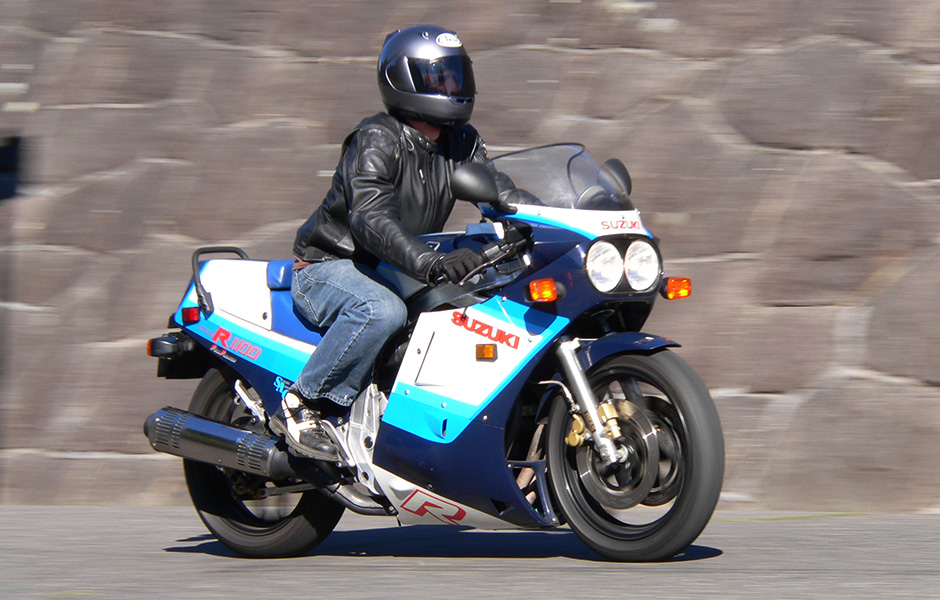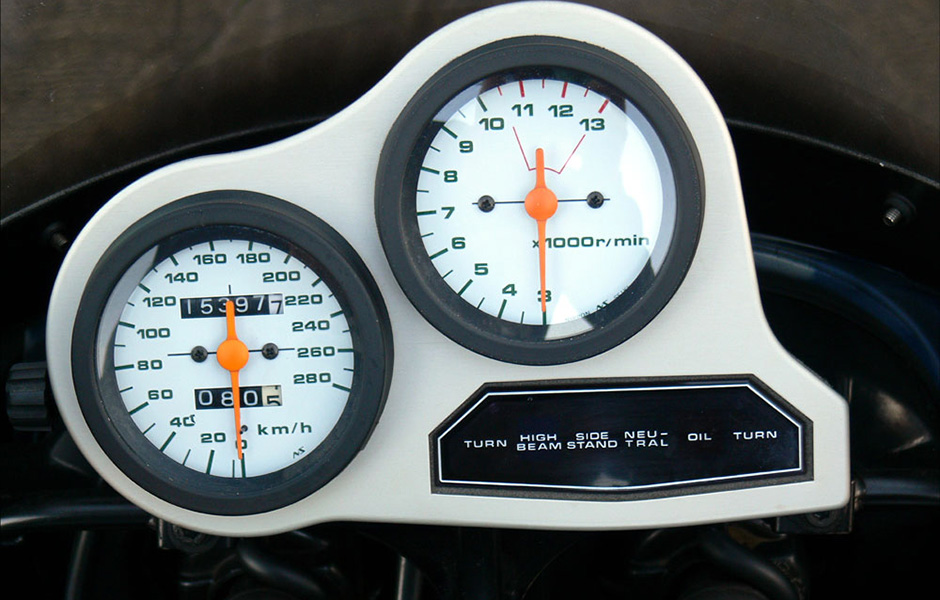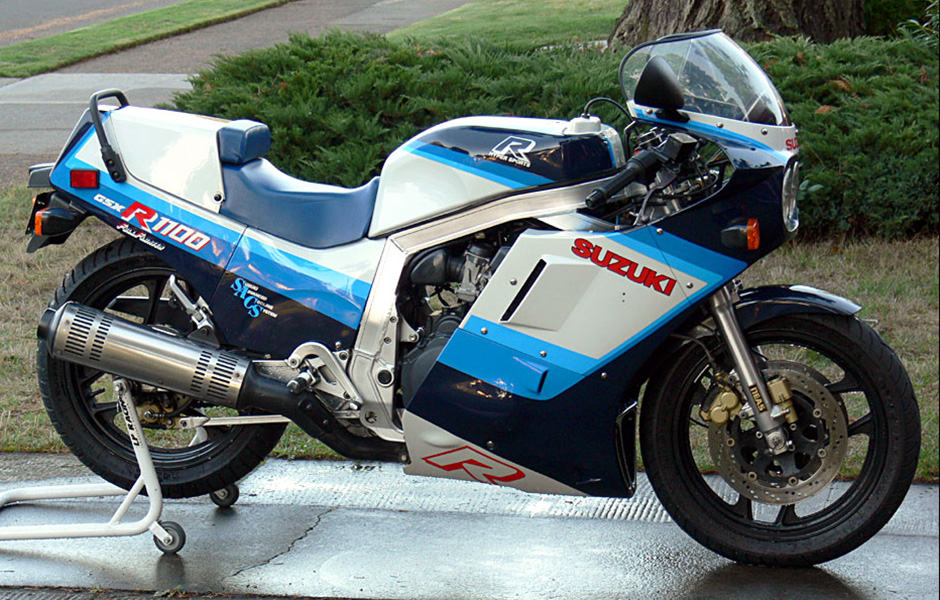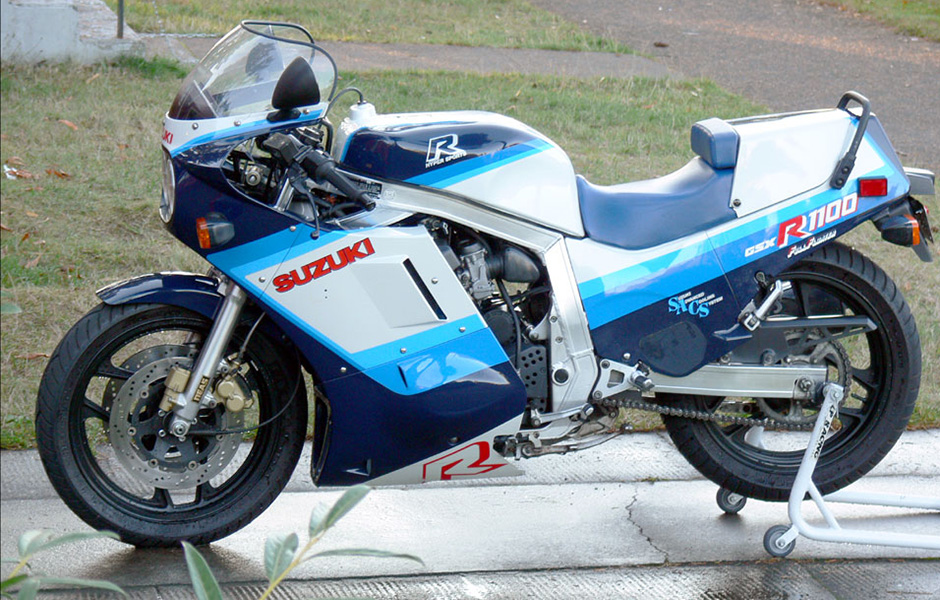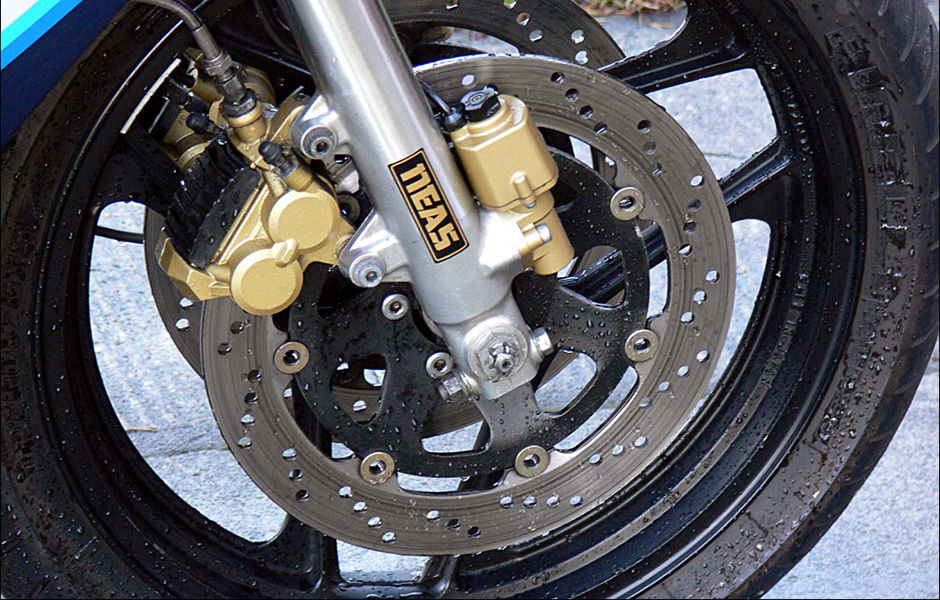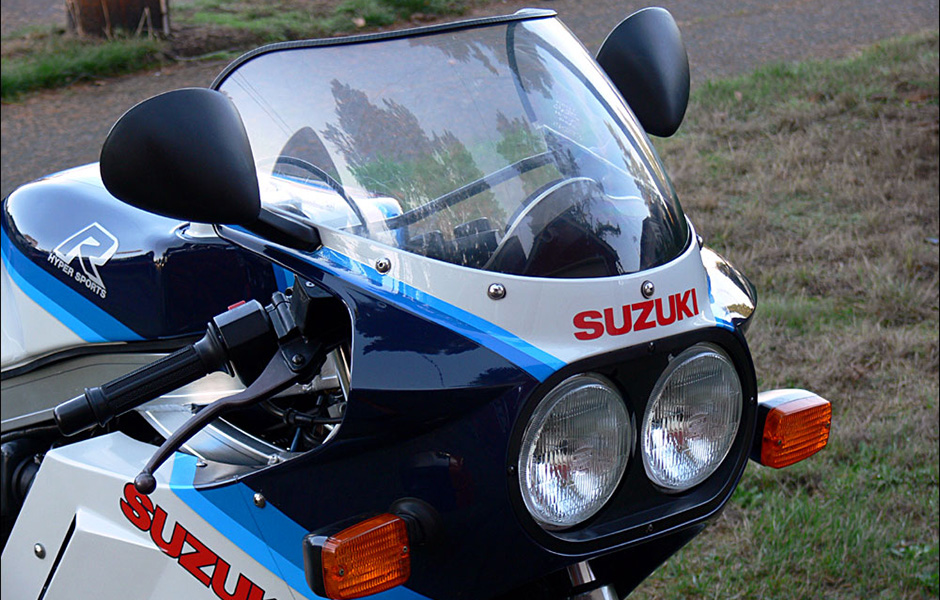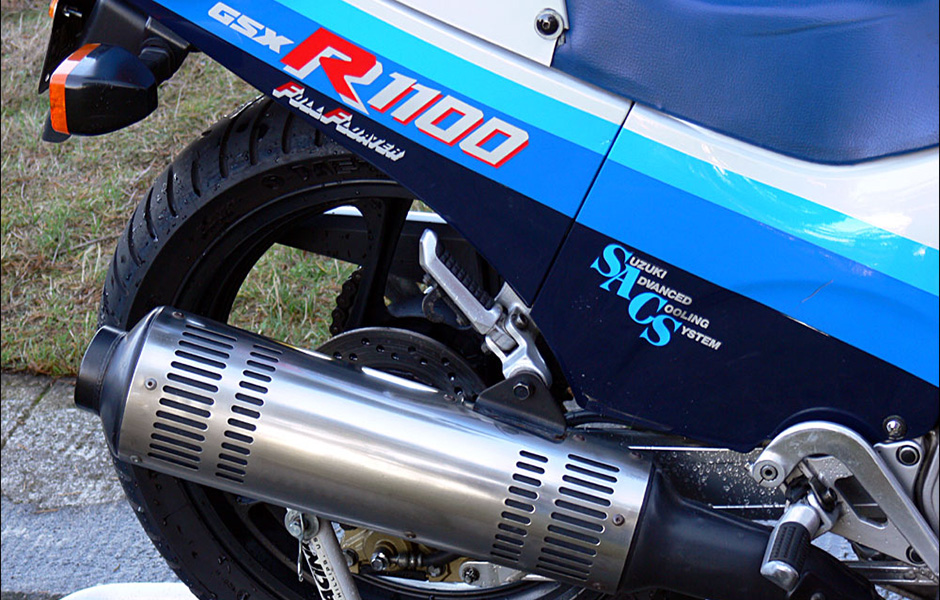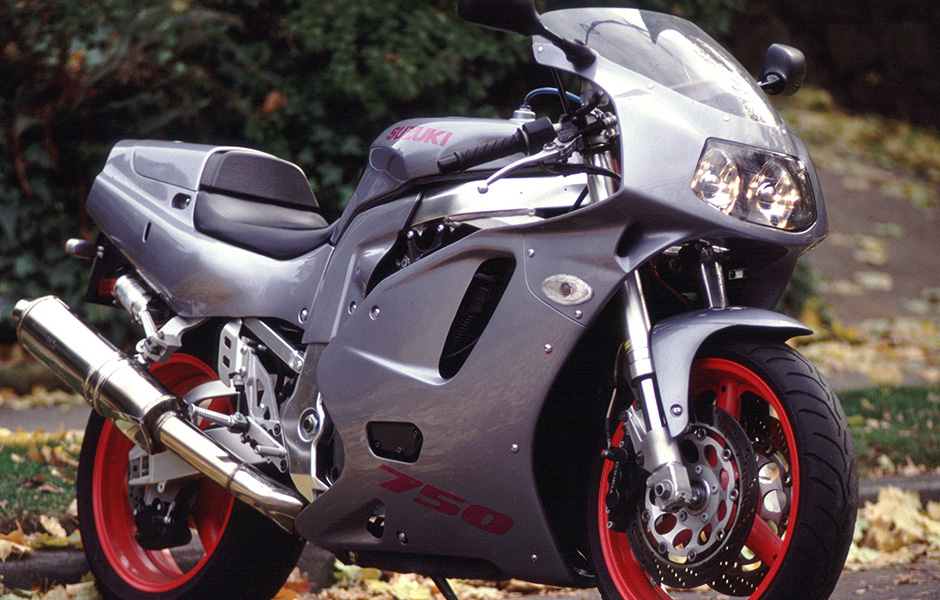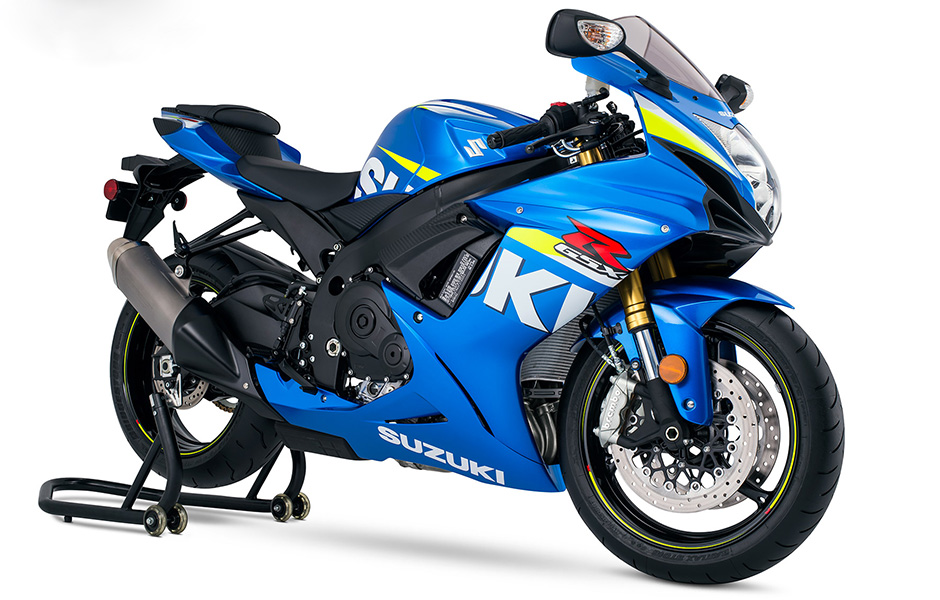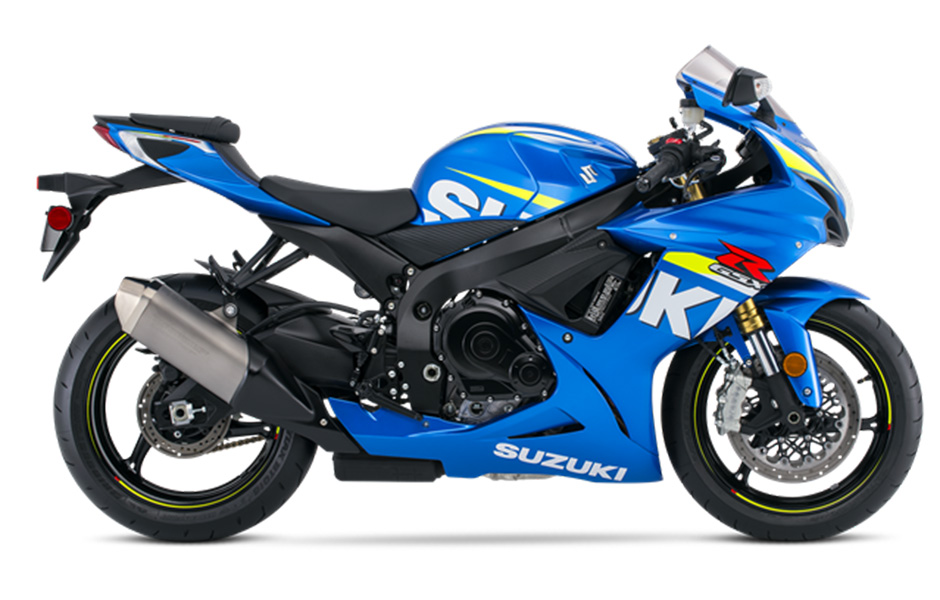I remember the moment with absolute clarity: exiting the final turn on perhaps my tenth lap of the day, I had the motorcycle hard over in third gear, hanging well off the bike to complete the turn. The racetrack’s long front straightaway opened up before me, and since the tight chicane typically located midway down the straight was not being used, it was a full throttle blast down to Turn One, nearly half a mile away.
I rolled the throttle smoothly to the stop and 12,000rpm quickly arrived as I tucked in hard on top of the tank, the speedometer moving quickly through 130, then 135, then 140 as I executed a quick shift to fourth, then moments later, to fifth. In my peripheral vision, 155 showed on the speedometer and suddenly, I was blowing past the braking markers ahead of the turn – except I was not on the brakes. The right hander was coming up right now and I was going way, way too fast to make the turn.
I retained enough presence of mind (or survival instincts) through the fear and rising panic to remember to gradually (but quickly) squeeze the front brakes and as I did so, the front forks compressed and the back end of the bike began to wag a bit, but speed was scrubbing off quickly, and I clicked the gearbox back down to fourth as I arrived at the corner, the engine screaming as it over-revved slightly to 13,000rpm from engine braking.
The back tire found traction again at the last possible millisecond as I eased off the brakes and hung my body out to the right to help initiate the turn. Knee on the tarmac, I ran a little wide due to the speed but trusting my tires, stayed in the throttle and off the brakes while heeled over, gradually tightening the line as the machine railed through the nearly 180-degree corner on the edge of the tires.
Exiting Turn One, Turn Two was exactly the opposite: a quick transition to a 90-degree left-hander, followed by a banked 90-degree righty that emptied out onto the back straight. Adrenaline surging and confidence returning, I stayed on the power, hitting the apexes and powering down the back straight, the speed again rising to nearly 150mph. Two laps later, sans the corner dramatics, I rolled back to the pits. I was enthralled.
It was the year 2000, and despite my heroics above, I was not racing in MotoGP or at the Isle of Man. No, I was at school, Reg Pridmore’s CLASS riding school to be specific, and the bike that saved my bacon out there in Turn One? A 1993 Suzuki GSX-R 750W (below), the fastest, most composed, best handling motorcycle I’d ever had the pleasure of riding up to that point in my life. Had I been on something even slightly less capable, I’m sure I would have gone skidding into the gravel trap and likely into the tire fence. But the sweet-handling, confidence-inspiring GSX-R brought me back from the brink of oblivion. Several times.

2015 marks the 30-year anniversary of Suzuki’s game-changing sport bike, and today, the GSX-R “Gixxer” 750 soldiers on, literally alone in the 750cc sportbike category. Today, the sport bike that really gave the world “sport bikes” is better than ever and retains that magical combination of light weight, knife-edge handling and perfect power that mixes the increased grunt of a 750cc engine with the light weight and agility of a 600cc bike. For many hard-core sport riders, the bits that make up the GSX-R750 are the secret sauce of sport bike riding.
Back in the debrief between on-track sessions, come to find out I’d been followed out on the track by none other than the former World Champ hisself, Reg Pridmore, who was riding a Honda VFR kitted with a video camera in the nose. He pops in the tape (remember those?) and there I am, ass up on the Gixxer heading towards disaster. “See this rider,” our instructor began, “he’s too hot into this corner. But he maintains control, doesn’t panic on the brakes and even though he goes a bit wide, he corrects his line and in the next two corners, shows smoothness and confidence. That’s good riding.” The words rang in my ears for years afterwards. It was a day of instruction that forever changed how I rode motorcycles.
It would not be a stretch to say the original 1985 Suzuki GSX-R750 had as much of an impact on the performance category in motorcycling as the 1969 Honda CB750 had on the industry as a whole. When it arrived, you knew that a major change had just taken place.
The original GSX-R750 was a scalpel among butter knives, a spare, uncomfortable, vibrating missile you could ostensibly ride to work all week, and with some slight changes, could go wax everyone at the track on the weekends. It was, at long last, a real-deal race bike with lights and turn signals. Delete those, and you could go racing. And win. And thousands of riders did just that.
Club and amateur racing paddocks became flooded with GSX-Rs. So did salvage yards as under-skilled riders crashed them into bits. The Gixxer helped give the motorcycle world terms like crotch rocket, bullet bike, squid, ticket magnet, and donor cycle. If you didn’t know what you were doing, the GSX-R and the sport bikes other makers quickly came up with to compete with it could get you into a whole bunch of trouble in a very short time frame. Some riders just lost their license. Others lost much more. These were not – and still aren’t – bikes for beginners or pretenders. You’d better have skills.
But if you understood, kept your head screwed on while riding and took the time to really learn the art of motorcycle riding, few bikes could give you the immense and intense return on those investments of time and effort like Suzuki’s GSX-R sportbikes. Over three decades, they’ve changed and evolved, gained weight and lost it, paved the technological curve and then been a bit behind it. But the essence has always remained: simplicity, light weight, big power, dialed-in handling, affordable price. Other bikes go faster, maybe handle better (or maybe not), and certainly cost a lot more. But all along, the GSX-R has been the icon casting the shadow those bikes ride in.
In 2006 I managed to reel in a pristine 1986 GSX-R1100, the bigger brother to that first-year GSX-R750. It was a Canadian bike, and with a little sleight of hand at the DMV, I got it registered in the States without having to jump through a lot of bureaucratic hoops. The bike was a spotless, low mile (well, kilometer) bone stock survivor, and after a tuneup, new tires and some other attention to aging components, she was back in fine form.

But this icon of sport riding wasn’t heading for the track. I wasn’t the young, single guy I once was, and for the most part I rode the (quite valuable) GSX-R on my favorite local twisties, where it still held its own against modern bikes ridden by pilots with, say, fewer miles under the tires than myself. The big motor pulled hard and strafing the local curves, the bike was a joy to ride – for about an hour. After that, my back started complaining, as did my wrists and forearms.
True to its soul, the now vintage Gixxer was never a very good street bike, it was still a race bike in sheep’s clothing, only in its element when the white-faced tach and speedometer were rolling hard to the right, not while barely breathing in freeway traffic. As the economy sank into the Great Recession, I sold the GSX-R and other bikes in my collection; bills must be paid and kids have to eat, I suppose.
But I’ll never forget those amazing laps on that ’93 GSX-R750W, which I bought specifically so I could get out on the track and see what I was made of. I rarely rode it on the street, I had other bikes more suited for that kind of riding. It truly was a track tool.
If you watch road racing and think “I could do that,” then by all means get yourself a proper sport bike, whether it’s a GSX-R (highly recommended) or some other track weapon. Get yourself to a school like Reg Pridmore’s CLASS so you can learn the finer points of control, confidence and experience some high-speed nirvana. Just watch those straightaway speeds heading into Turn One.
Ready to ride on the track? Check out the CLASS school and check with local riding clubs in your area for tracks days.
